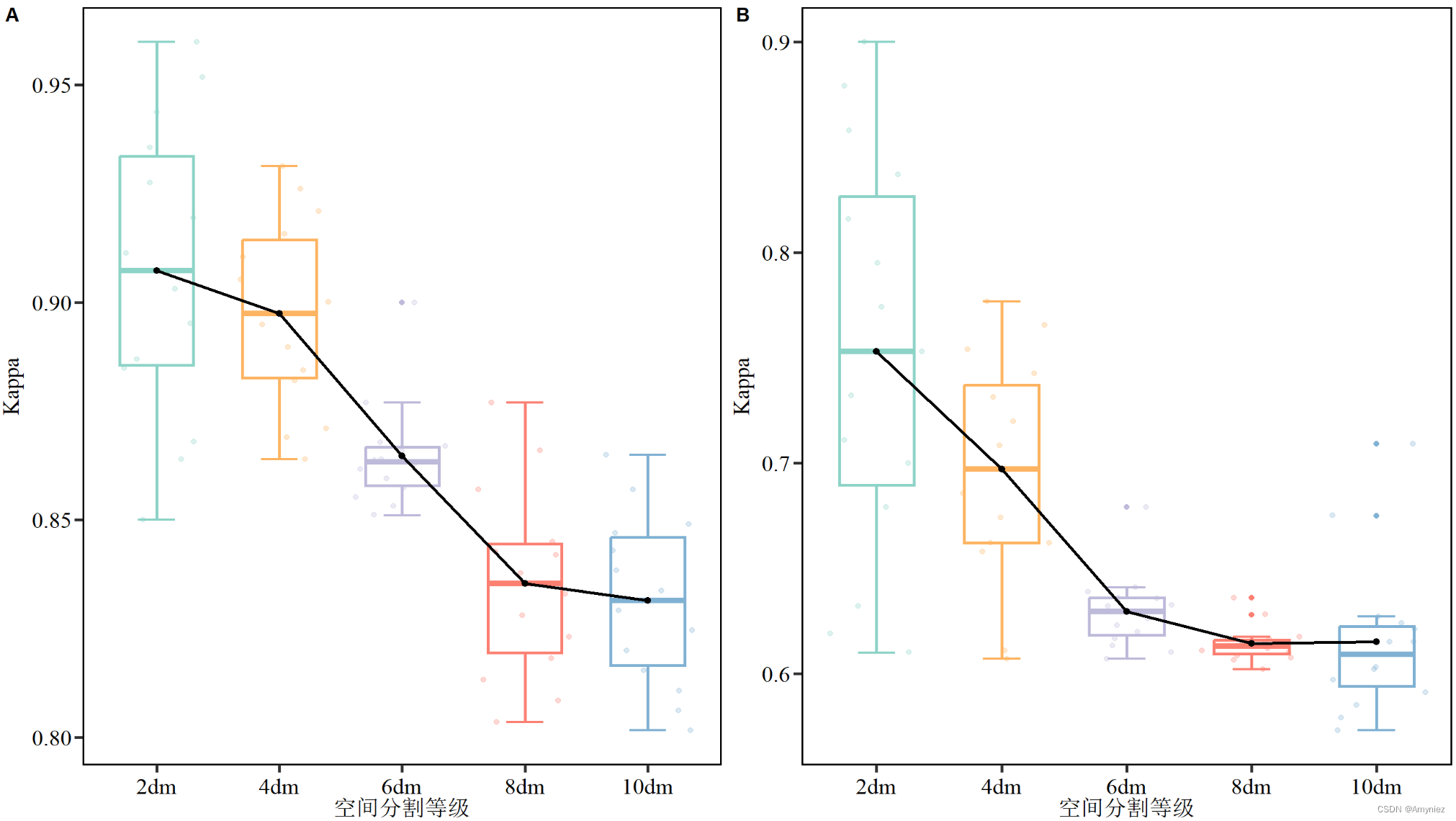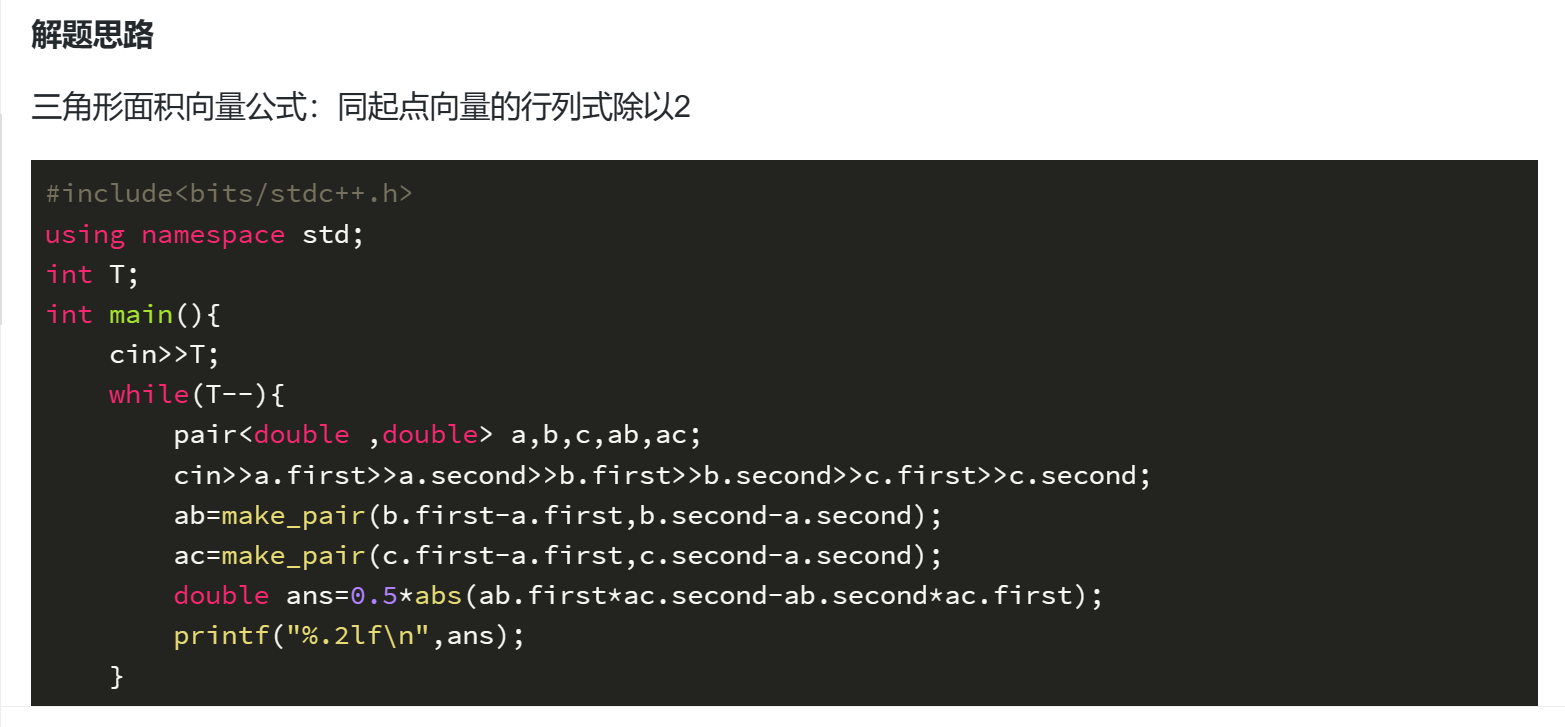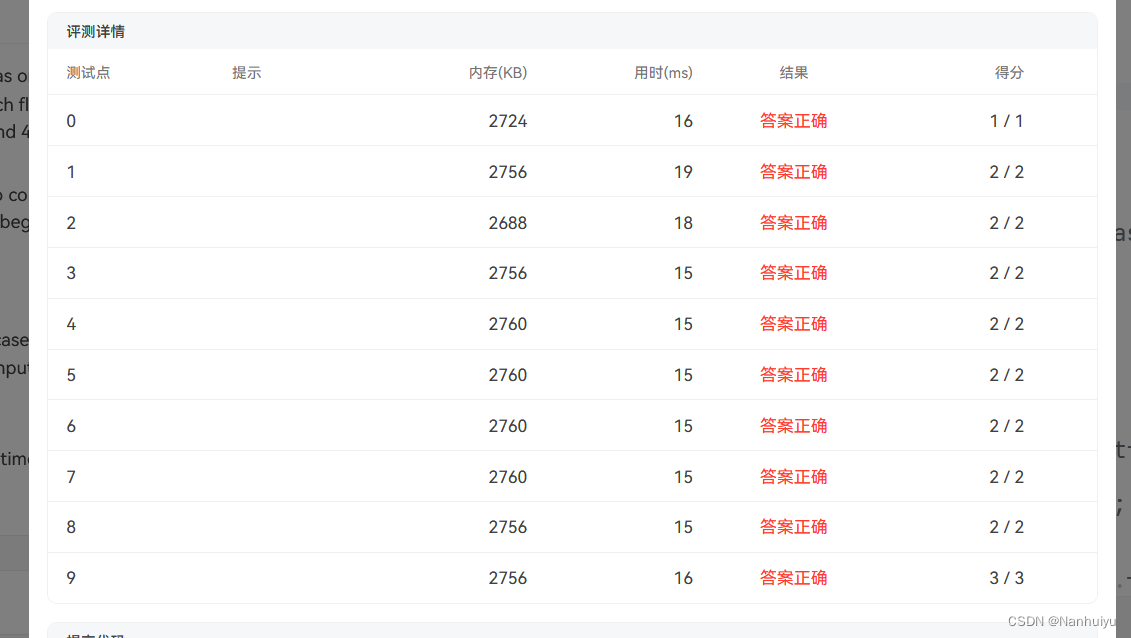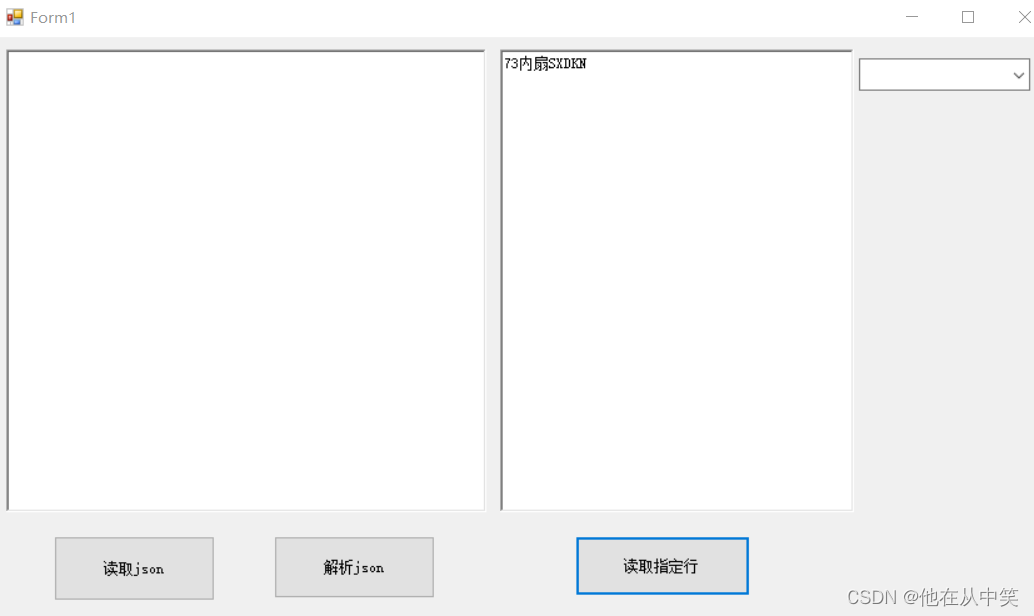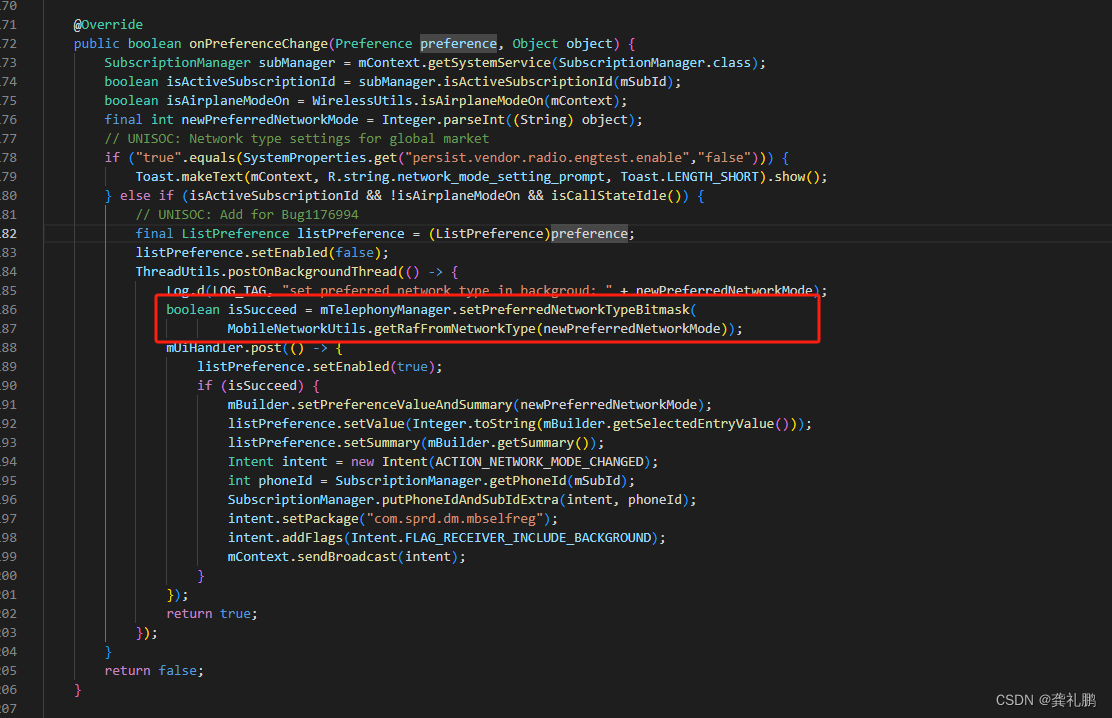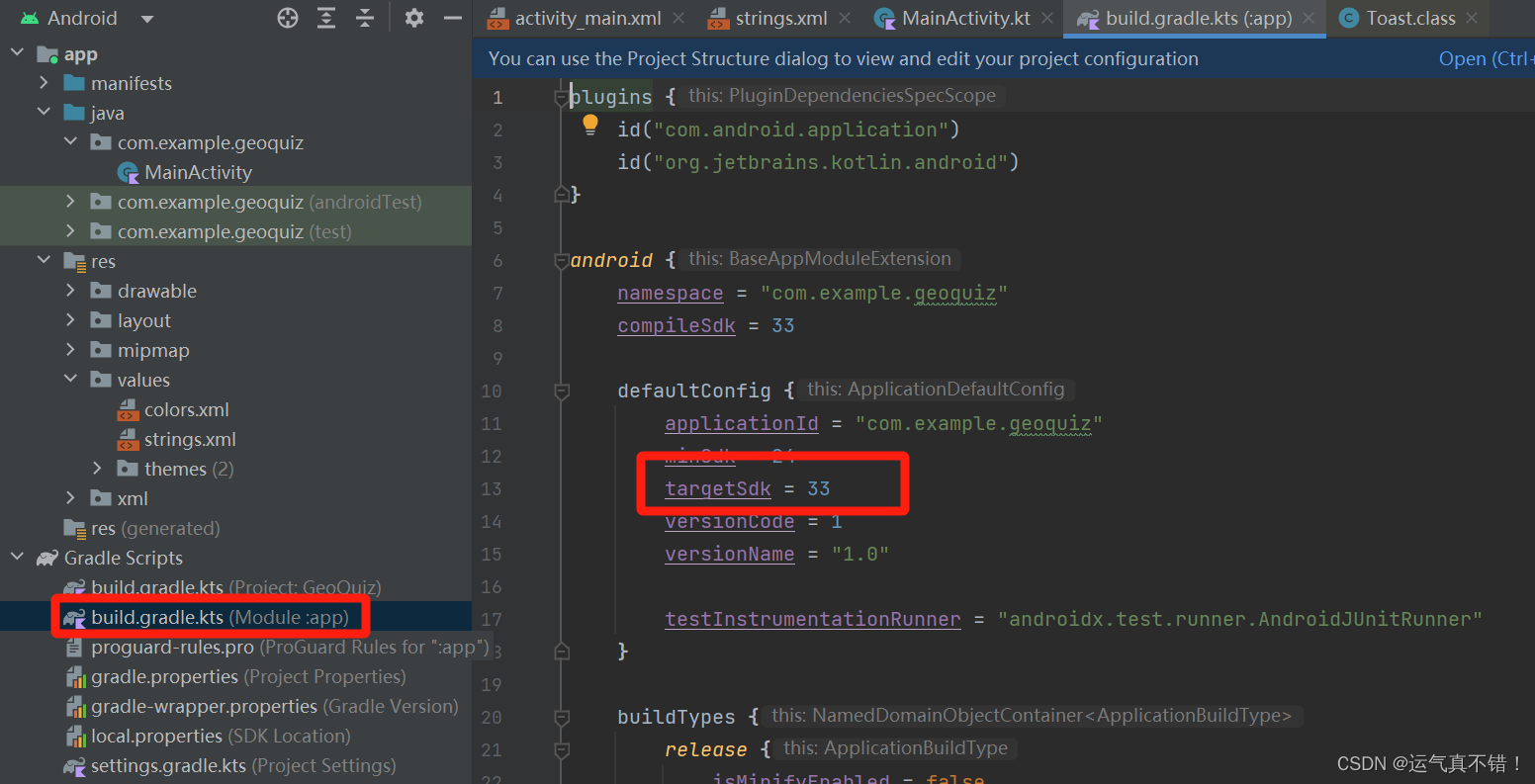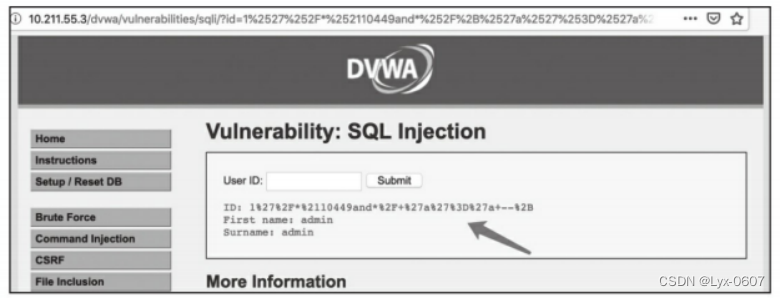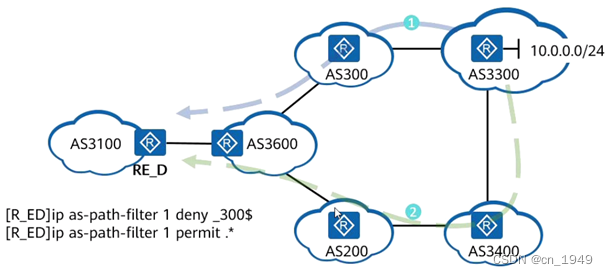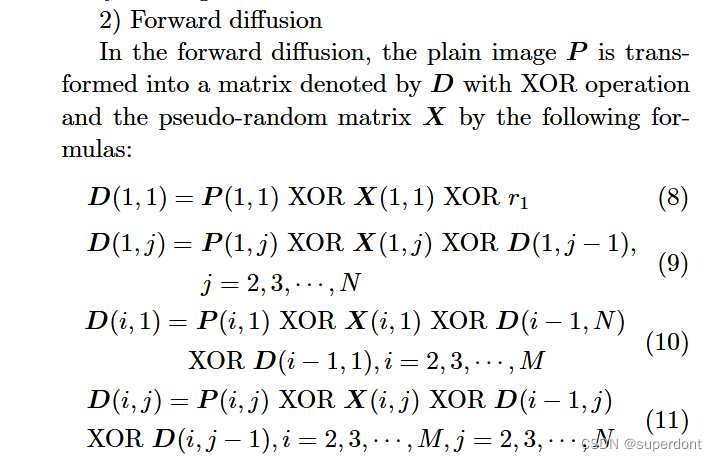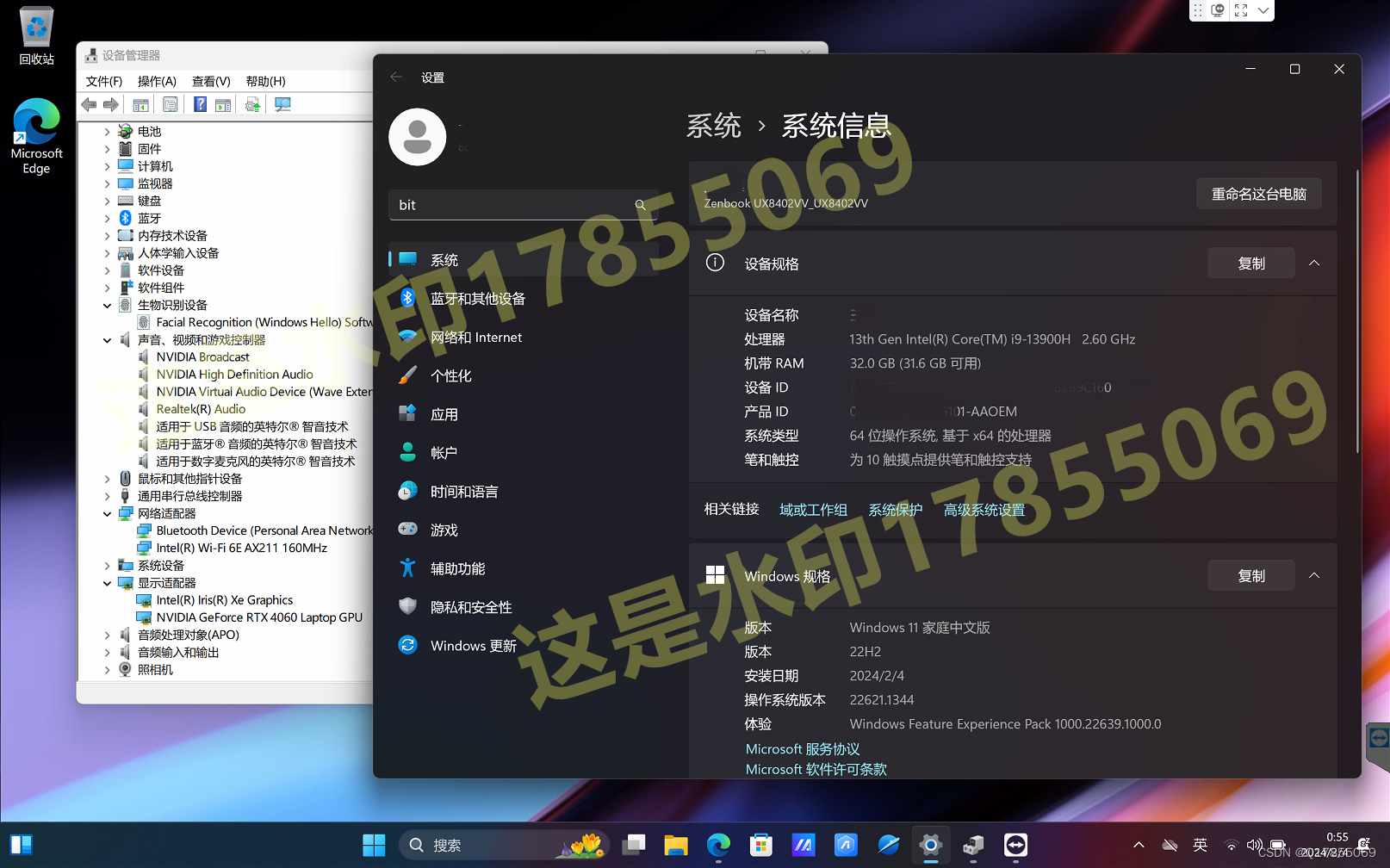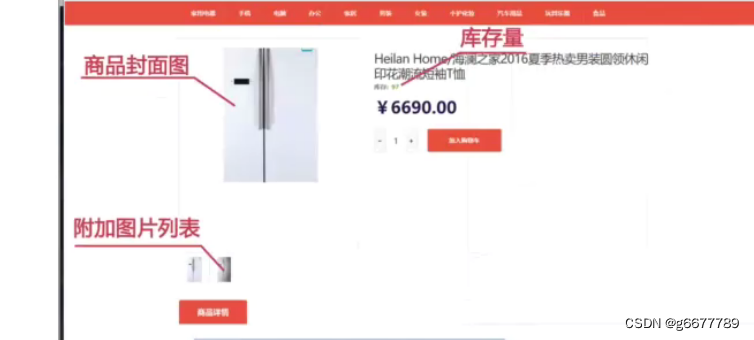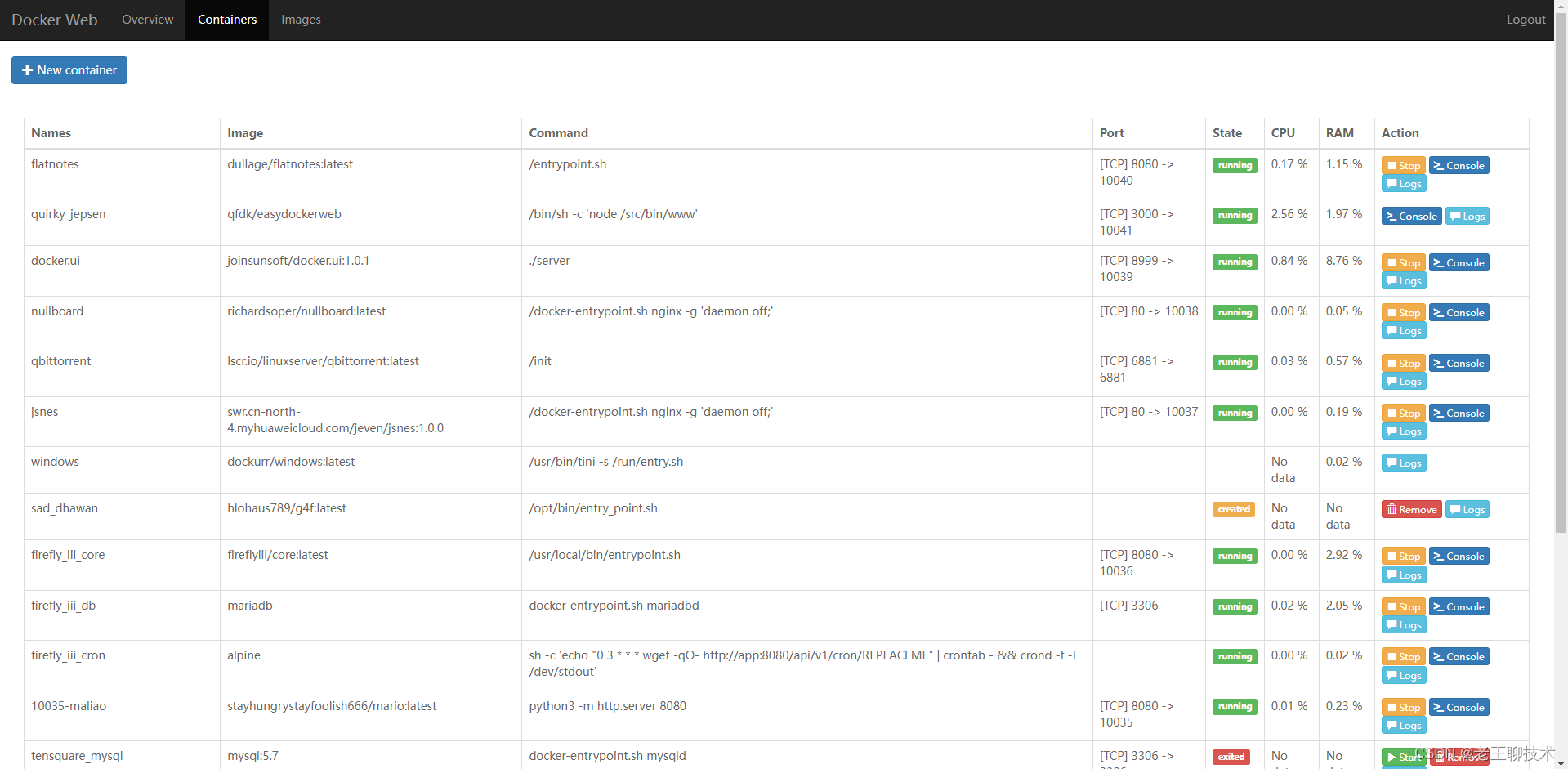目录
- 2.10 二叉树
- 1) 存储
- 2) 遍历
- 广度优先
- 深度优先
- 递归实现
- 非递归实现
- 习题
- E01. 前序遍历二叉树-Leetcode 144
- E02. 中序遍历二叉树-Leetcode 94
- E03. 后序遍历二叉树-Leetcode 145
- E04. 对称二叉树-Leetcode 101
- E05. 二叉树最大深度-Leetcode 104
- E06. 二叉树最小深度-Leetcode 111
- E07. 翻转二叉树-Leetcode 226
- E08. 后缀表达式转二叉树
- E09. 根据前序与中序遍历结果构造二叉树-Leetcode 105
- E10. 根据中序与后序遍历结果构造二叉树-Leetcode 106

2.10 二叉树
二叉树是这么一种树状结构:每个节点最多有两个孩子,左孩子和右孩子
重要的二叉树结构
- 完全二叉树(complete binary tree)是一种二叉树结构,除最后一层以外,每一层都必须填满,填充时要遵从先左后右
- 平衡二叉树(balance binary tree)是一种二叉树结构,其中每个节点的左右子树高度相差不超过 1
1) 存储
存储方式分为两种
- 定义树节点与左、右孩子引用(TreeNode)
- 使用数组,前面讲堆时用过,若以 0 作为树的根,索引可以通过如下方式计算
- 父 = floor((子 - 1) / 2)
- 左孩子 = 父 * 2 + 1
- 右孩子 = 父 * 2 + 2
2) 遍历
遍历也分为两种
- 广度优先遍历(Breadth-first order):尽可能先访问距离根最近的节点,也称为层序遍历
- 深度优先遍历(Depth-first order):对于二叉树,可以进一步分成三种(要深入到叶子节点)
- pre-order 前序遍历,对于每一棵子树,先访问该节点,然后是左子树,最后是右子树
- in-order 中序遍历,对于每一棵子树,先访问左子树,然后是该节点,最后是右子树
- post-order 后序遍历,对于每一棵子树,先访问左子树,然后是右子树,最后是该节点
广度优先
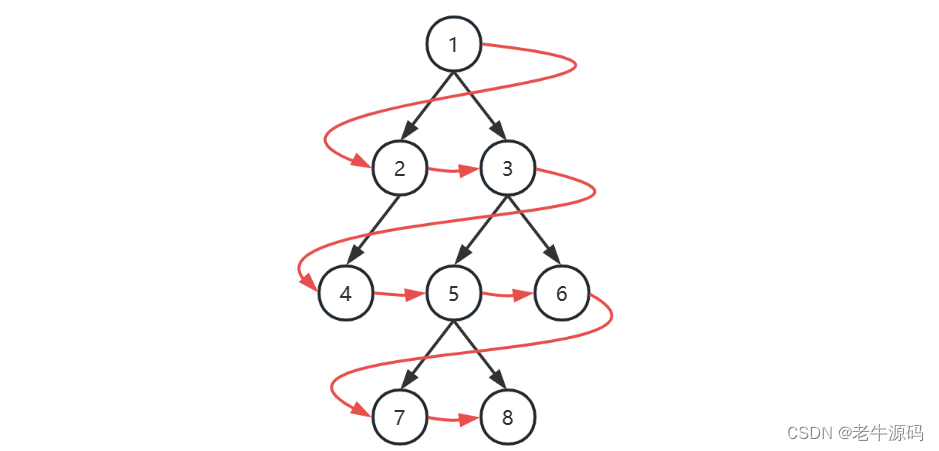
| 本轮开始时队列 | 本轮访问节点 |
|---|---|
| [1] | 1 |
| [2, 3] | 2 |
| [3, 4] | 3 |
| [4, 5, 6] | 4 |
| [5, 6] | 5 |
| [6, 7, 8] | 6 |
| [7, 8] | 7 |
| [8] | 8 |
| [] |
- 初始化,将根节点加入队列
- 循环处理队列中每个节点,直至队列为空
- 每次循环内处理节点后,将它的孩子节点(即下一层的节点)加入队列
注意
以上用队列来层序遍历是针对 TreeNode 这种方式表示的二叉树
对于数组表现的二叉树,则直接遍历数组即可,自然为层序遍历的顺序
深度优先

| 栈暂存 | 已处理 | 前序遍历 | 中序遍历 |
|---|---|---|---|
| [1] | 1 ✔️ 左💤 右💤 | 1 | |
| [1, 2] | 2✔️ 左💤 右💤 1✔️ 左💤 右💤 | 2 | |
| [1, 2, 4] | 4✔️ 左✔️ 右✔️ 2✔️ 左💤 右💤 1✔️ 左💤 右💤 | 4 | 4 |
| [1, 2] | 2✔️ 左✔️ 右✔️ 1✔️ 左💤 右💤 | 2 | |
| [1] | 1✔️ 左✔️ 右💤 | 1 | |
| [1, 3] | 3✔️ 左💤 右💤 1✔️ 左✔️ 右💤 | 3 | |
| [1, 3, 5] | 5✔️ 左✔️ 右✔️ 3✔️ 左💤 右💤 1✔️ 左✔️ 右💤 | 5 | 5 |
| [1, 3] | 3✔️ 左✔️ 右💤 1✔️ 左✔️ 右💤 | 3 | |
| [1, 3, 6] | 6✔️ 左✔️ 右✔️ 3✔️ 左✔️ 右💤 1✔️ 左✔️ 右💤 | 6 | 6 |
| [1, 3] | 3✔️ 左✔️ 右✔️ 1✔️ 左✔️ 右💤 | ||
| [1] | 1✔️ 左✔️ 右✔️ | ||
| [] |
递归实现
/**
* <h3>前序遍历</h3>
* @param node 节点
*/
static void preOrder(TreeNode node) {
if (node == null) {
return;
}
System.out.print(node.val + "\t"); // 值
preOrder(node.left); // 左
preOrder(node.right); // 右
}
/**
* <h3>中序遍历</h3>
* @param node 节点
*/
static void inOrder(TreeNode node) {
if (node == null) {
return;
}
inOrder(node.left); // 左
System.out.print(node.val + "\t"); // 值
inOrder(node.right); // 右
}
/**
* <h3>后序遍历</h3>
* @param node 节点
*/
static void postOrder(TreeNode node) {
if (node == null) {
return;
}
postOrder(node.left); // 左
postOrder(node.right); // 右
System.out.print(node.val + "\t"); // 值
}
非递归实现
前序遍历
LinkedListStack<TreeNode> stack = new LinkedListStack<>();
TreeNode curr = root;
while (!stack.isEmpty() || curr != null) {
if (curr != null) {
stack.push(curr);
System.out.println(curr);
curr = curr.left;
} else {
TreeNode pop = stack.pop();
curr = pop.right;
}
}
中序遍历
LinkedListStack<TreeNode> stack = new LinkedListStack<>();
TreeNode curr = root;
while (!stack.isEmpty() || curr != null) {
if (curr != null) {
stack.push(curr);
curr = curr.left;
} else {
TreeNode pop = stack.pop();
System.out.println(pop);
curr = pop.right;
}
}
后序遍历
LinkedListStack<TreeNode> stack = new LinkedListStack<>();
TreeNode curr = root;
TreeNode pop = null;
while (!stack.isEmpty() || curr != null) {
if (curr != null) {
stack.push(curr);
curr = curr.left;
} else {
TreeNode peek = stack.peek();
if (peek.right == null || peek.right == pop) {
pop = stack.pop();
System.out.println(pop);
} else {
curr = peek.right;
}
}
}
对于后序遍历,向回走时,需要处理完右子树才能 pop 出栈。如何知道右子树处理完成呢?
-
如果栈顶元素的 r i g h t ≡ n u l l right \equiv null right≡null 表示没啥可处理的,可以出栈
-
如果栈顶元素的 r i g h t ≠ n u l l right \neq null right=null,
- 那么使用 lastPop 记录最近出栈的节点,即表示从这个节点向回走
- 如果栈顶元素的 r i g h t = = l a s t P o p right==lastPop right==lastPop 此时应当出栈
对于前、中两种遍历,实际以上代码从右子树向回走时,并未走完全程(stack 提前出栈了)后序遍历以上代码是走完全程了
统一写法
下面是一种统一的写法,依据后序遍历修改
LinkedList<TreeNode> stack = new LinkedList<>();
TreeNode curr = root; // 代表当前节点
TreeNode pop = null; // 最近一次弹栈的元素
while (curr != null || !stack.isEmpty()) {
if (curr != null) {
colorPrintln("前: " + curr.val, 31);
stack.push(curr); // 压入栈,为了记住回来的路
curr = curr.left;
} else {
TreeNode peek = stack.peek();
// 右子树可以不处理, 对中序来说, 要在右子树处理之前打印
if (peek.right == null) {
colorPrintln("中: " + peek.val, 36);
pop = stack.pop();
colorPrintln("后: " + pop.val, 34);
}
// 右子树处理完成, 对中序来说, 无需打印
else if (peek.right == pop) {
pop = stack.pop();
colorPrintln("后: " + pop.val, 34);
}
// 右子树待处理, 对中序来说, 要在右子树处理之前打印
else {
colorPrintln("中: " + peek.val, 36);
curr = peek.right;
}
}
}
public static void colorPrintln(String origin, int color) {
System.out.printf("\033[%dm%s\033[0m%n", color, origin);
}
一张图演示三种遍历
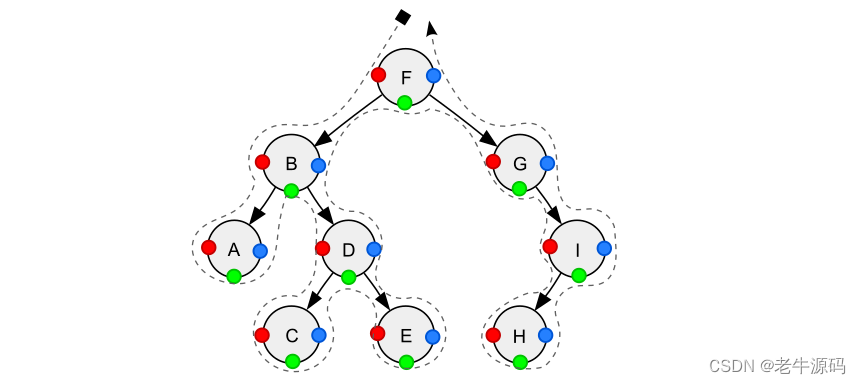
- 红色:前序遍历顺序
- 绿色:中序遍历顺序
- 蓝色:后续遍历顺序
习题
E01. 前序遍历二叉树-Leetcode 144
E02. 中序遍历二叉树-Leetcode 94
E03. 后序遍历二叉树-Leetcode 145
E04. 对称二叉树-Leetcode 101
public boolean isSymmetric(TreeNode root) {
return check(root.left, root.right);
}
public boolean check(TreeNode left, TreeNode right) {
// 若同时为 null
if (left == null && right == null) {
return true;
}
// 若有一个为 null (有上一轮筛选,另一个肯定不为 null)
if (left == null || right == null) {
return false;
}
if (left.val != right.val) {
return false;
}
return check(left.left, right.right) && check(left.right, right.left);
}
类似题目:Leetcode 100 题 - 相同的树
E05. 二叉树最大深度-Leetcode 104
后序遍历求解
/*
思路:
1. 得到左子树深度, 得到右子树深度, 二者最大者加一, 就是本节点深度
2. 因为需要先得到左右子树深度, 很显然是后序遍历典型应用
3. 关于深度的定义:从根出发, 离根最远的节点总边数,
注意: 力扣里的深度定义要多一
深度2 深度3 深度1
1 1 1
/ \ / \
2 3 2 3
\
4
*/
public int maxDepth(TreeNode node) {
if (node == null) {
return 0; // 非力扣题目改为返回 -1
}
int d1 = maxDepth(node.left);
int d2 = maxDepth(node.right);
return Integer.max(d1, d2) + 1;
}
后序遍历求解-非递归
/*
思路:
1. 使用非递归后序遍历, 栈的最大高度即为最大深度
*/
public int maxDepth(TreeNode root) {
TreeNode curr = root;
LinkedList<TreeNode> stack = new LinkedList<>();
int max = 0;
TreeNode pop = null;
while (curr != null || !stack.isEmpty()) {
if (curr != null) {
stack.push(curr);
int size = stack.size();
if (size > max) {
max = size;
}
curr = curr.left;
} else {
TreeNode peek = stack.peek();
if(peek.right == null || peek.right == pop) {
pop = stack.pop();
} else {
curr = peek.right;
}
}
}
return max;
}
层序遍历求解
/*
思路:
1. 使用层序遍历, 层数即最大深度
*/
public int maxDepth(TreeNode root) {
if(root == null) {
return 0;
}
Queue<TreeNode> queue = new LinkedList<>();
queue.offer(root);
int level = 0;
while (!queue.isEmpty()) {
level++;
int size = queue.size();
for (int i = 0; i < size; i++) {
TreeNode node = queue.poll();
if (node.left != null) {
queue.offer(node.left);
}
if (node.right != null) {
queue.offer(node.right);
}
}
}
return level;
}
E06. 二叉树最小深度-Leetcode 111
后序遍历求解
public int minDepth(TreeNode node) {
if (node == null) {
return 0;
}
int d1 = minDepth(node.left);
int d2 = minDepth(node.right);
if (d1 == 0 || d2 == 0) {
return d1 + d2 + 1;
}
return Integer.min(d1, d2) + 1;
}
相较于求最大深度,应当考虑:
- 当右子树为 null,应当返回左子树深度加一
- 当左子树为 null,应当返回右子树深度加一
上面两种情况满足时,不应该再把为 null 子树的深度 0 参与最小值比较,例如这样
1
/
2
- 正确深度为 2,若把为 null 的右子树的深度 0 考虑进来,会得到错误结果 1
1
\
3
\
4
- 正确深度为 3,若把为 null 的左子树的深度 0 考虑进来,会得到错误结果 1
层序遍历求解
遇到的第一个叶子节点所在层就是最小深度
例如,下面的树遇到的第一个叶子节点 3 所在的层就是最小深度,其他 4,7 等叶子节点深度更深,也更晚遇到
1
/ \
2 3
/ \
4 5
/
7
代码
public int minDepth(TreeNode root) {
if(root == null) {
return 0;
}
Queue<TreeNode> queue = new LinkedList<>();
queue.offer(root);
int level = 0;
while (!queue.isEmpty()) {
level++;
int size = queue.size();
for (int i = 0; i < size; i++) {
TreeNode node = queue.poll();
if (node.left == null && node.right == null) {
return level;
}
if (node.left != null) {
queue.offer(node.left);
}
if (node.right != null) {
queue.offer(node.right);
}
}
}
return level;
}
效率会高于之前后序遍历解法,因为找到第一个叶子节点后,就无需后续的层序遍历了
E07. 翻转二叉树-Leetcode 226
public TreeNode invertTree(TreeNode root) {
fn(root);
return root;
}
private void fn(TreeNode node){
if (node == null) {
return;
}
TreeNode t = node.left;
node.left = node.right;
node.right = t;
fn(node.left);
fn(node.right);
}
先交换、再递归或是先递归、再交换都可以
E08. 后缀表达式转二叉树
static class TreeNode {
public String val;
public TreeNode left;
public TreeNode right;
public TreeNode(String val) {
this.val = val;
}
public TreeNode(TreeNode left, String val, TreeNode right) {
this.left = left;
this.val = val;
this.right = right;
}
@Override
public String toString() {
return this.val;
}
}
/*
中缀表达式 (2-1)*3
后缀(逆波兰)表达式 21-3*
1.遇到数字入栈
2.遇到运算符, 出栈两次, 与当前节点建立父子关系, 当前节点入栈
栈
| |
| |
| |
_____
表达式树
*
/ \
- 3
/ \
2 1
21-3*
*/
public TreeNode constructExpressionTree(String[] tokens) {
LinkedList<TreeNode> stack = new LinkedList<>();
for (String t : tokens) {
switch (t) {
case "+", "-", "*", "/" -> { // 运算符
TreeNode right = stack.pop();
TreeNode left = stack.pop();
TreeNode parent = new TreeNode(t);
parent.left = left;
parent.right = right;
stack.push(parent);
}
default -> { // 数字
stack.push(new TreeNode(t));
}
}
}
return stack.peek();
}
E09. 根据前序与中序遍历结果构造二叉树-Leetcode 105
- 先通过前序遍历结果定位根节点
- 再结合中序遍历结果切分左右子树
public class E09Leetcode105 {
/*
preOrder = {1,2,4,3,6,7}
inOrder = {4,2,1,6,3,7}
根 1
pre in
左 2,4 4,2
右 3,6,7 6,3,7
根 2
左 4
根 3
左 6
右 7
*/
public TreeNode buildTree(int[] preOrder, int[] inOrder) {
if (preOrder.length == 0) {
return null;
}
// 创建根节点
int rootValue = preOrder[0];
TreeNode root = new TreeNode(rootValue);
// 区分左右子树
for (int i = 0; i < inOrder.length; i++) {
if (inOrder[i] == rootValue) {
// 0 ~ i-1 左子树
// i+1 ~ inOrder.length -1 右子树
int[] inLeft = Arrays.copyOfRange(inOrder, 0, i); // [4,2]
int[] inRight = Arrays.copyOfRange(inOrder, i + 1, inOrder.length); // [6,3,7]
int[] preLeft = Arrays.copyOfRange(preOrder, 1, i + 1); // [2,4]
int[] preRight = Arrays.copyOfRange(preOrder, i + 1, inOrder.length); // [3,6,7]
root.left = buildTree(preLeft, inLeft); // 2
root.right = buildTree(preRight, inRight); // 3
break;
}
}
return root;
}
}
- 代码可以进一步优化,涉及新数据结构,以后实现
E10. 根据中序与后序遍历结果构造二叉树-Leetcode 106
- 先通过后序遍历结果定位根节点
- 再结合中序遍历结果切分左右子树
public TreeNode buildTree(int[] inOrder, int[] postOrder) {
if (inOrder.length == 0) {
return null;
}
// 根
int rootValue = postOrder[postOrder.length - 1];
TreeNode root = new TreeNode(rootValue);
// 切分左右子树
for (int i = 0; i < inOrder.length; i++) {
if (inOrder[i] == rootValue) {
int[] inLeft = Arrays.copyOfRange(inOrder, 0, i);
int[] inRight = Arrays.copyOfRange(inOrder, i + 1, inOrder.length);
int[] postLeft = Arrays.copyOfRange(postOrder, 0, i);
int[] postRight = Arrays.copyOfRange(postOrder, i, postOrder.length - 1);
root.left = buildTree(inLeft, postLeft);
root.right = buildTree(inRight, postRight);
break;
}
}
return root;
}
- 代码可以进一步优化,涉及新数据结构,以后实现
